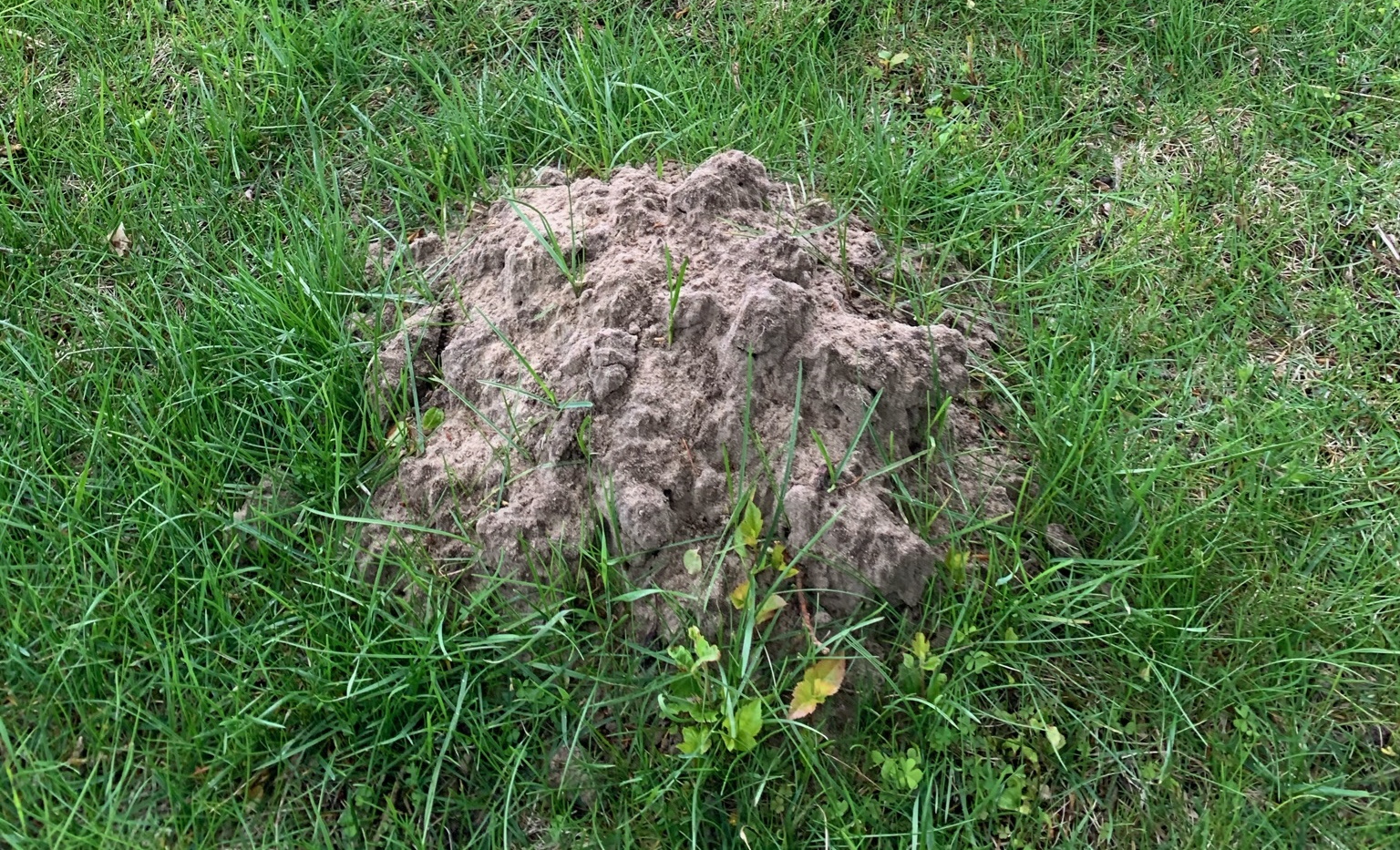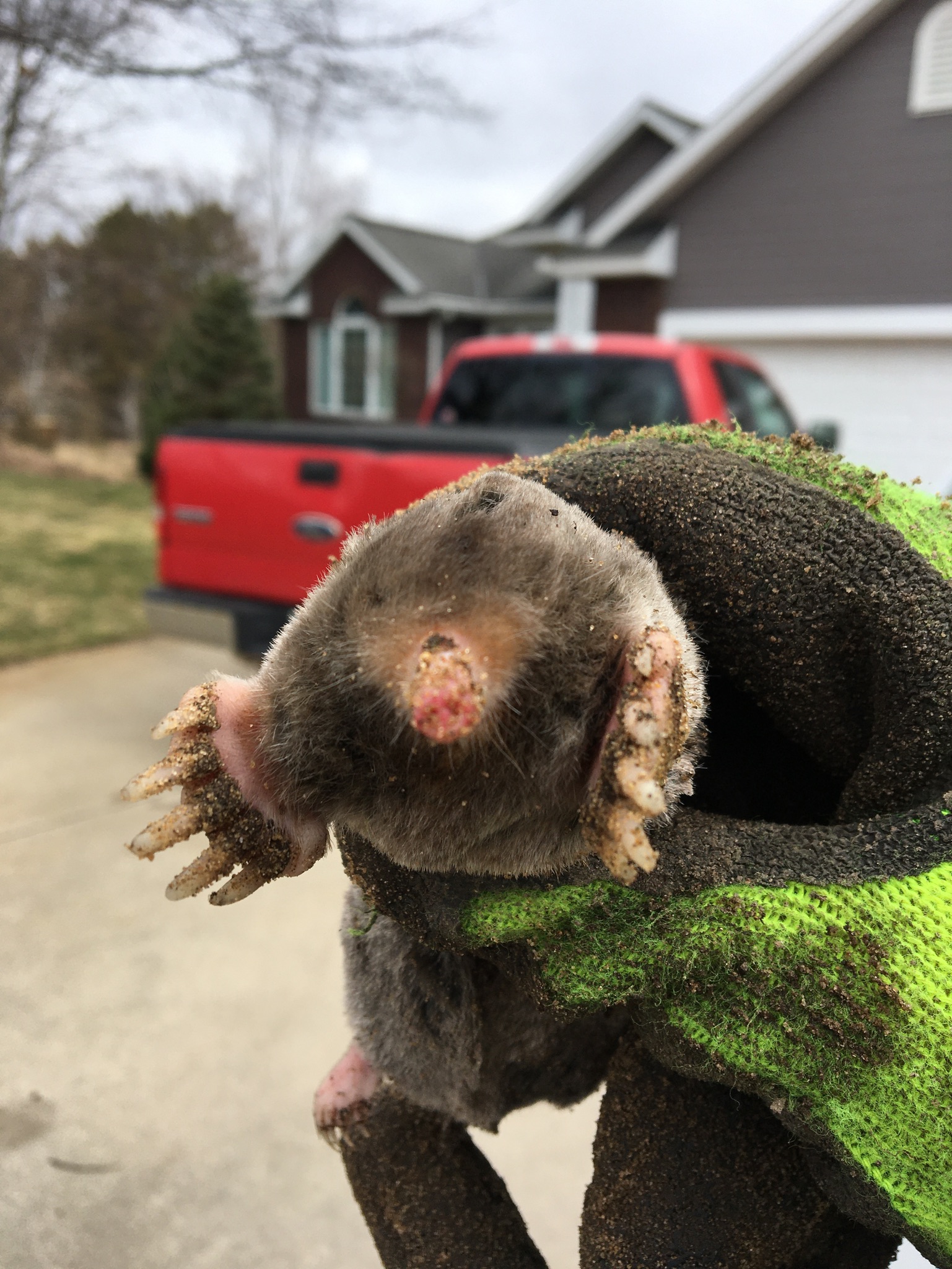Mole Control Hudsonville, MI
Are you looking for Hudsonville mole control and trapping services? When it comes to moles destroying your lawn, we specialize in fast and extremely effective solutions. Our professional solutions aim to minimize yard damage in a quick and more importantly, safe manner.
Call Us!
The removal process starts with a phone call. We will gather information that allows us to customize a wildlife removal plan.
Home Inspection
We begin the with a complete home inspection to find animal entry points, potentially vulnerable areas and evidence such as feces or paw prints..
Removal
After we gather intel, we then set up traps to humanely get rid of nuisance animals causing damages or that have recently moved into your home.
Repair & Restoration
Once the animals have been removed will access the damages and provide full services for clean up, repair, and animal exclusion services to keep them out for good.
Call Us Now
Yard Mole Removal Services Hudsonville, MI
Moles will create costly damages if they make their way into your lawn. They can burrow the length of a football field in one day, searching for food, thanks to their large front hands and claws. Your grass will suffer from unsightly tunnels and root damage as a result of this. Best Way Animal Removal has decades of experience performing mole control in Hudsonville and can get rid of the moles in your yard safely and effectively. Getting the population under control by removing as many moles as possible to extract the breeding pair is the key to successful mole removal. Best Way employs humane mole removal strategies that are tailored around offering the most cost-effective method for the species of mole, and the extent of the damage. We also like to educate homeowners on how to make their property less appealing to moles as part of our service. The mole control experts at Best Way are ready to begin removing moles from your property.

Mole Control Services Hudsonville, MI
Wildlife removal technicians at Best Way Animal Removal are experts at getting rid of moles and can also help keep them away. We can quickly solve your mole control problems in Hudsonville, MI using our effective and efficient mole control techniques. Best Way provides a wide range of mole control services in Hudsonville, MI, including mole removal, mole trapping, mole prevention techniques, and mole damage repair. We can eliminate your mole problems by employing only humane animal handling techniques throughout our mole control strategies. Allow Best Way Animal Removal to assist you in getting rid of moles!

Mole Species Of Michigan
In Michigan, there are two types of moles: the eastern and the star-nosed mole. Both moles have several characteristics in common, such as the ability to dig 30 to 100 yards per day. The majority of mole damage occurs during the summer, but moles are also active during the winter. A mole’s life is simple; they eat and dig continuously, feeding on worms and larvae in the soil. Both types of moles can cause significant damage to lawns by burrowing horizontally or vertically, sometimes up to 2 acres in diameter.
Eastern Mole
Eastern moles have soft, silky, dense fur that lies equally well when brushed forward or backward, an adaptation that allows them to move around in their underground burrow in either direction. The feet of the short front limbs have been greatly enlarged for digging. The palms of the forefeet face outward and are at least as wide as they are long. The eastern mole’s claws on the front feet are broad and flat, whereas the claws on the hind feet are small and weak. The degenerate eyes are hidden beneath the fur and hidden behind fused eyelids. The head, chin, wrist, and belly of eastern moles have grayish-brown fur that is frequently stained brownish or yellowish by secretions from oil glands. The face, feet, and tail are all pinkish or whitish in color. The tail is sparsely-haired and short. At the end of the long, pointed, and naked nose, the nostrils open upward.
Star Nosed Mole
The Star Nosed Mole is one of the most specialized in the animal kingdom. It’s also the most aquatic Michigan mole, and it’s only found in the state’s eastern territory. The star-nosed mole is a small, streamlined mammal with 22 pink, fleshy tentacles radiating in a star-like pattern from the nose. This Michigan mole species is equipped with black and brown fur that is short and soft. Their ears are hidden, their eyes are small, and they have a long, scaly tail with coarse hairs. The massive forelimbs support enlarged, broad feet and large claws that point outward to assist in tunnel digging.
Habitat Of Moles
Except for Antarctica and South America, moles can be found on every continent. They can be found in grasslands, urban areas, gardens, grasslands, sand dunes, mixed woodland, or any area with soil suitable for tunneling. They prefer to avoid areas with acidic soil and mountainous terrain.Tunnels are used by moles for transportation, but they are more than just underground highways. At the ends of tunnels, moles create extraordinary chambers that serve as bedrooms and birthing areas. Moles will sometimes spend generations in a series of tunnels before moving.In tunnel chambers, moles have kitchens as well. They eat mostly earthworms and store them in the section by biting their heads to keep them alive and immobile.
What Attracts Moles To A Lawn?
Because you have a natural food source in your soil, such as grubs or earthworms, moles are attracted to your lawn. When moles burrow into our yards, they create raised tunnels on the surface and pile up dirt when they exit. They do this in order to find food. If grubs have attacked your lawn and you’ve noticed dead patches of grass, moles have probably come to feast on the grubs.To survive, moles require a lot of food. A yard with grubs will be more appealing than one without them. If your lawn is healthy and free of dead patches, your soil is full of earthworms, which are a favorite food of moles. Moles can easily survive on a steady diet of earthworms.

We proudly service Hudsonville, Michigan and the surrounding areas for pest moles and all nuisance wildlife problems.
Signs Of A Mole Infestation
Moles have the ability to dig 18 feet per hour. Burrows are dug deep underground, and temporary tunnels are dug off of them. The same tunnel is rarely used more than once. These surface tunnels are a sure sign that you have moles in your yard. Plant roots are detached by moles as they dig their tunnels. This not only allows weeds to take root, but it also has the potential to kill your lawn, plants, and trees. Your lawn will appear lumpy and raised as a result of these surface tunnels. Molehills are another sign of moles in your yard. While molehills are far less common than tunnels, they do exist. They’re typically under 6 inches tall and shaped like a football or a volcano.
4 Signs Of A Mole Problem:
- Mole Tunnels
- Patches Of Dead Grass
- Abnormal Amount Of Weeds
- Moles Hills (dirt piles)

Hudsonville, Michigan Mole Trapping Service
 Keeping moles out of gardens and yards requires altering the landscape to make it inhospitable to them. This can be accomplished by removing food sources in the soil, such as worms, grubs, and larvae, or compacting the soil with a heavy roller to make digging difficult. Moles can also be kept out of garden plots by burying fencing at least a foot deep in the ground. If the moles remain in the yard after removing grubs, humane mole traps is the only other option. Traps will best set strategically by our mole experts around your home in order to quickly curb the mole infestation.
Keeping moles out of gardens and yards requires altering the landscape to make it inhospitable to them. This can be accomplished by removing food sources in the soil, such as worms, grubs, and larvae, or compacting the soil with a heavy roller to make digging difficult. Moles can also be kept out of garden plots by burying fencing at least a foot deep in the ground. If the moles remain in the yard after removing grubs, humane mole traps is the only other option. Traps will best set strategically by our mole experts around your home in order to quickly curb the mole infestation.
Our Mole Control Process
- Look for mole entry points in the lawn, landscape, and surrounding areas.
- Differentiate between damage caused by moles, voles, chipmunks, squirrels, and other animals.
- Determine which tunnels are currently operational.
- Figure out which tunnels are for eating and which are for traveling.
- To determine which trap works best, measure the depth and width of traveling tunnels.
- Determine which trap will work best based on the amount of moisture in the soil.
- Set as many traps as necessary to catch the moles.
- Continue to keep an eye on mole activity and trap until they have been successfully removed.
Get Rid Of Moles Today
Trapping moles is a time-consuming and challenging process that should be left to professionals due to the animal’s elusive nature. Best Way’s wildlife experts have the right tools, skills, and knowledge to deal with mole problems effectively and humanely. Attempting at-home removal options may result in further lawn damage as the moles continue to tunnel throughout the property. Contact us today to begin the mole eradication process.
Professional Mole Control
We’re Just A Call Away
Click To Call
